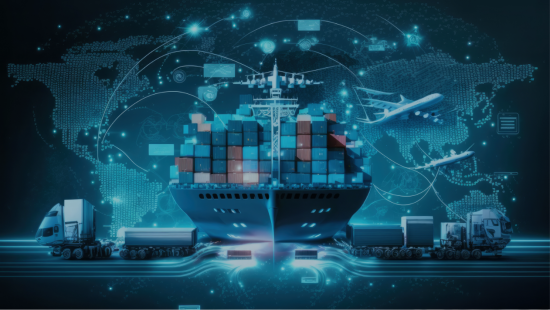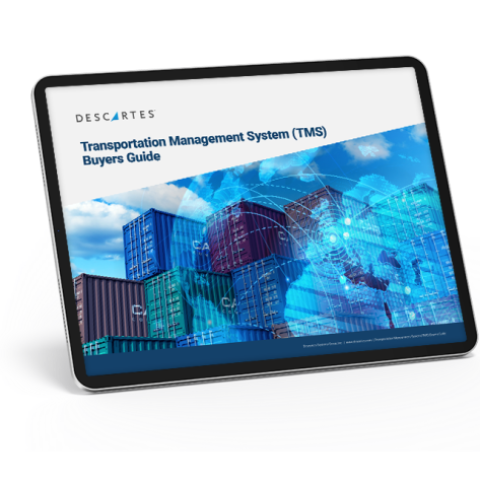As a shipper, ensuring the safe and compliant transport of pharmaceutical products is critical within the freight industry.
Reliable transportation networks are crucial for ensuring that life-saving medications remain fresh and in perfect condition, which supports global public health systems.
Additionally, it's important to recognize that various pharmaceuticals need specific temperature ranges to preserve their stability and quality while being transported.
Here are the common temperature ranges for reefer trailers:
| Temperature | Purpose | |
|---|---|---|
Controlled Room Temperature - CRT | 15°C to 25°C | Many pharmaceuticals, including most oral medications, are transported at this temperature range. |
| Refrigerated - Cold Chain | 2°C to 8°C | This range is crucial for vaccines, biologics, and certain medications that require a cool environment to remain effective. |
| Frozen | -20°C to -10°C | Certain pharmaceuticals, such as some biologics and specialty medications, require freezing temperatures to maintain their potency. |
| Deep Frozen | -80°C to -20°C | Highly sensitive products, like certain vaccines (e.g., some COVID-19 vaccines), need deep frozen conditions to ensure their stability. |
| Cryogenic | Below -150°C | Used for extremely sensitive biological samples and certain cell and gene therapies that must be kept at ultra-low temperatures. |
Challenges in Pharmaceutical Transportation
The transportation of pharmaceuticals poses distinct challenges that can greatly affect the global health sector.
If not addressed these challenges can lead to potential risks and losses. These challenges include:
Temperature/Condition Sensitivity
- Many medications require strict temperature control to maintain their efficacy. Fluctuations during transit can render them ineffective, posing significant risks to patient health.
- Solution: Install sophisticated temperature monitoring and control systems to maintain steady conditions during transit. Using insulated packaging and temperature-regulated transport methods can help preserve the necessary temperatures.
Regulatory Compliance
- Navigating the intricate network of international and local regulations is a continual challenge that demands careful planning and thorough documentation.
- Solution: Invest in regulatory compliance software and hire experts to ensure all documentation is accurate and up to date. Routine training for staff on the latest regulations can also prevent non-compliance issues.
Security Risks
- Pharmaceuticals are prime targets for theft, necessitating heightened security measures during transportation.
- Solution: Utilize GPS tracking, tamper-evident seals, and secure packaging. Collaborating with specialized security providers and training personnel on security protocols can further mitigate theft risks.
Logistical Complexities
- Coordinating the logistics of timely delivery across multiple geographies, especially to remote areas, can be daunting and prone to disruptions.
- Solution: Leverage logistical technologies like route optimization software and real-time tracking systems. Establishing reliable partnerships with local logistics providers can also ensure timely and efficient deliveries.
Handling Specialties
- Certain pharmaceuticals require specialized handling and equipment, complicating their transportation.
- Solution: Provide specialized training for handling specific types of pharmaceuticals. Investing in the necessary equipment and ensuring adherence to handling protocols can streamline the transportation of specialty medications.
Addressing these challenges is critical to ensuring that vital medications safely reach their destinations, ultimately supporting global health systems and patient care. For shippers, this means investing in logistical technologies and adopting proper handling procedures.
How Are Pharmaceuticals Transported? – The Right Tech and Best Practices
The transportation of pharmaceuticals is a vital operation that utilizes various advanced technologies to guarantee the products' safety and adherence to regulations. These technologies collaborate to preserve the integrity of delicate medications during transit, tackling numerous logistical challenges that shippers encounter.
Here are the key technologies and best practices to consider:
1. Reefer Trailers
- Function: Maintain necessary temperature conditions for sensitive medications during transit.
- Best Practice: Equip trailers with advanced cooling systems that can be adjusted to meet the specific requirements of different pharmaceutical products. Regular maintenance and calibration of these cooling systems are essential to prevent any fluctuations that could compromise product quality.
- Impact: Ensure medications remain effective and safe for use upon arrival, supporting optimal patient care.
2. GPS Tracking Devices
- Function: Monitor the precise routes and timely delivery of shipments.
- Best Practice: Utilize real-time location data to track cargo progress and ensure adherence to planned routes. Implement immediate actions for any deviations or delays to mitigate risks.
- Impact: Provide visibility into shipment status, especially important for time-sensitive medications where delays can impact patient health.
3. Temperature Monitoring Systems
- Function: Offer real-time data on internal trailer conditions.
- Best Practice: Ensure systems monitor temperature, humidity, and other critical parameters. These systems should include alarms for any deviations, allowing for quick corrective actions. This real-time oversight helps prevent the spoilage of temperature-sensitive medications, maintaining their efficacy and safety.
- Impact: Maintain medication efficacy and safety by preventing temperature-sensitive spoilage, ensuring patient safety and trust.
4.Visibility/Logistics Platforms
- Function: Optimize routing and inventory management.
- Best Practice: Use advanced algorithms to predict potential disruptions and suggest alternative routes. Efficiently manage inventory levels to ensure timely product availability and reduce waste.
- Impact: Ensure timely delivery and availability of medications, minimizing the risk of stockouts and waste from expired products, thereby enhancing patient care.
How a Visibility Platform Enhances Pharmaceutical Shipments
A pharmaceutical visibility platform can be essential in managing the complexities involved in transporting condition-sensitive products.
By providing real-time tracking and monitoring, these platforms offer several benefits:
1. Proactive Management
Proactive management in pharmaceutical transportation involves leveraging real-time data to monitor and control the shipping environment. By continuously tracking conditions such as temperature and humidity, shippers can ensure that pharmaceuticals remain within their required parameters throughout the journey. This real-time oversight allows for immediate adjustments if deviations occur, preventing spoilage or degradation of the products. Advanced monitoring systems and IoT devices play a crucial role in this process, providing shippers with the tools to maintain optimal conditions and mitigate risks proactively.
2. Following Through with Regulatory Compliance
Regulatory compliance is a cornerstone of pharmaceutical transportation. Automated logging and reporting features simplify adherence to stringent regulations set by bodies like the U.S. Food and Drug Administration (FDA) and European Medicines Agency (EMA). These systems ensure that all necessary documentation is accurately maintained and readily available for inspections, significantly reducing the risk of costly violations. Compliance technologies also facilitate the audit process by providing a clear, verifiable record of the conditions and handling of pharmaceuticals during transit, thereby enhancing transparency and trust in the supply chain.
3. Enhancing Security
Enhanced security in pharmaceutical transport involves implementing advanced visibility tools to monitor the shipment’s integrity and location. Real-time tracking systems enable shippers to identify and respond swiftly to security breaches or route deviations. This level of oversight helps prevent theft, tampering, and other risks associated with high-value pharmaceuticals. Additionally, security measures such as tamper-evident seals and GPS tracking ensure that any unauthorized access or anomalies are detected immediately, safeguarding the shipment from potential threats.
4. Gaining Operational Efficiency
Operational efficiency is achieved through the integration of advanced analytics and logistical software. These tools optimize routing by predicting potential delays and identifying the most efficient paths, thus reducing transit times and costs. Predictive analytics help in managing inventory levels more effectively, ensuring that the right amount of product is available when needed. By streamlining operations, shippers can enhance the reliability and speed of pharmaceutical deliveries, ultimately improving service levels and reducing operational expenses.
5. Improving Communication Amongst Stakeholders
Effective stakeholder communication is crucial for maintaining a transparent and trustworthy pharmaceutical supply chain. Real-time updates provided by visibility platforms enhance communication between manufacturers, shippers, healthcare providers, and other stakeholders. This continuous flow of information ensures that all parties are informed about the shipment’s status, enabling timely interventions if issues arise. Improved communication fosters collaboration and trust among stakeholders, ensuring that pharmaceuticals reach their destinations safely and efficiently, thereby supporting patient care and public health.
Final Thoughts
For shippers aiming to enhance their pharmaceutical transportation processes, integrating Descartes MacroPoint into your logistics strategy is a worthwhile consideration.
With its advanced real-time tracking and monitoring capabilities, Descartes MacroPoint provides unparalleled visibility and control over your shipments, ensuring that your pharmaceuticals arrive safely and on time.
Explore how Descartes MacroPoint can revolutionize your logistics operations and support the delivery of pharmaceuticals.
Speak with a team member to get started today.
Are you ready to discuss Pharmaceutical Transportation?
Featured Content





